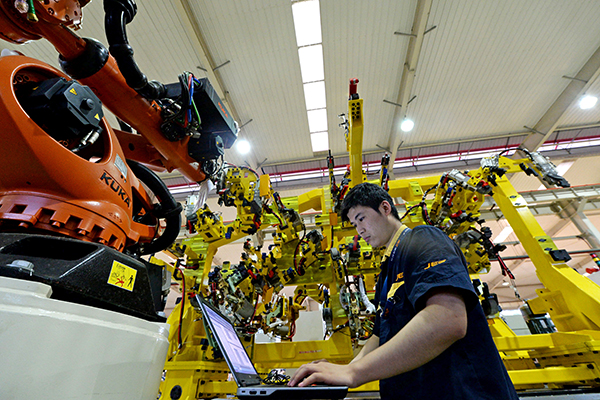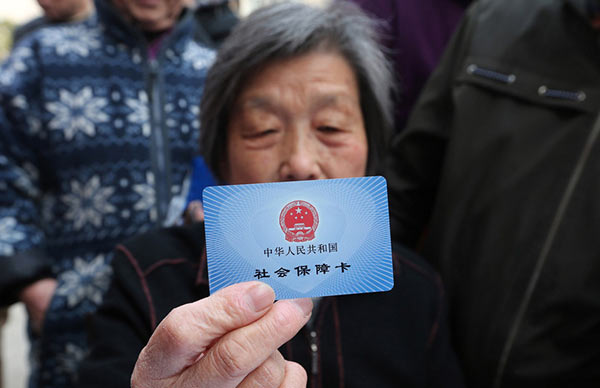Returns rising from manufacturing ODI
 |
|
A technician writes the program for a robot bound for export in Hefei, capital of Anhui province. [Photo provided to China Daily] |
The returns earned by Chinese companies from investments in overseas manufacturing this year are estimated to have risen by 19.8 percent year-on-year, to $225 billion, according to a senior official.
Zhang Ji, the assistant minister of commerce, said as more outbound direct investment has flowed into manufacturing sectors, such as automobiles, cement and clothing, companies have found new growth points and built industrial chains.
"Their investment can effectively drive trade growth," Zhang said at an economic forum held by the China Center for International Economic Exchanges on Saturday. "We've also discovered an alternative benefit: Part of the country's gross domestic product has been transformed into gross national product."
The ODI from the nonfinancial sector stood at $161.7 billion in the first 11 months of this year, up by 55.3 percent year-on-year, the ministry's data show.
Over the same period, Chinese companies completed 561 merger and acquisition deals overseas, with $82.4 billion, or 30 percent, of the total investment going into manufacturing businesses.
"The investment categories of Chinese companies have further expanded overseas. High-end manufacturing, information transmission and software technology services were hot areas for ODI this year," said Zhang Xiaoqiang, vice-chairman of the China Center for International Economic Exchanges.
The major investment destinations have been Association of Southeast Asian Nations members, Australia, the European Union, Russia and the United States, he said, adding that countries along the Belt and Road Initiative are also hot destinations.
The initiative is a trade, services and infrastructure network that includes the Silk Road Economic Belt and 21st Century Maritime Silk Road, covering about 4.4 billion people in more than 60 countries and regions in Asia, Europe and Africa.
"We have also welcomed companies from the US and Japan to form partnerships with Chinese companies to develop markets along these two trading routes," Zhang Xiaoqiang added.
To enhance its earning ability, China has built 56 economic and trade cooperation zones in over 20 countries and regions, including Sri Lanka, Pakistan and Southeast Asia. By September, the efforts had created 160,000 jobs.
More than 100 countries and international organizations are involved in the Belt and Road Initiative. China has signed cooperation agreements with more than 40 countries and regions along the routes, and has started to cooperate on international industrial capacity with more than 20 countries, data from Zhang Xiaoqiang's center show.
"Chinese companies need to further absorb quality resources from global brands through overseas M&A activities and build core strengths in market popularity, technology and talent rather than low-end manufacturing," said Lin Guijun, a professor at the University of International Business and Economics in Beijing.























